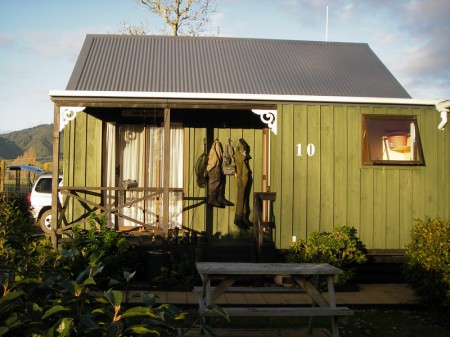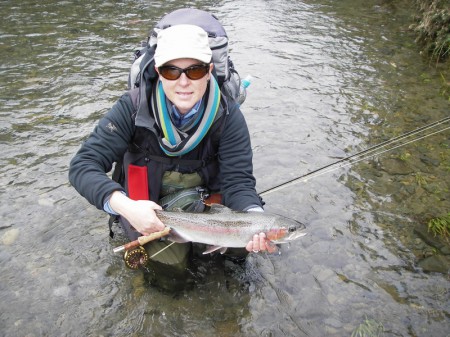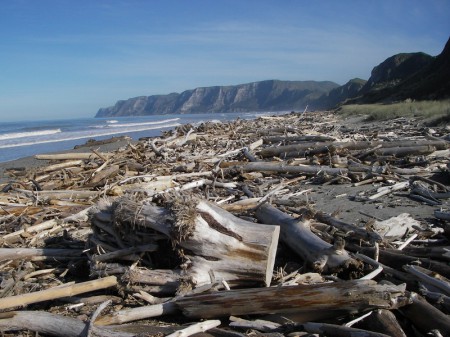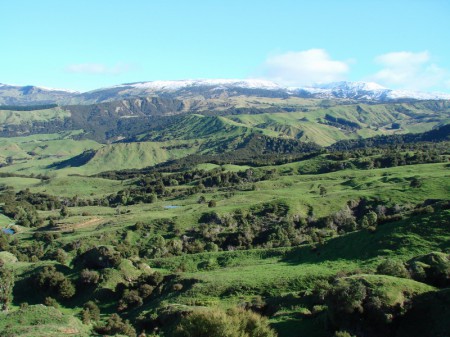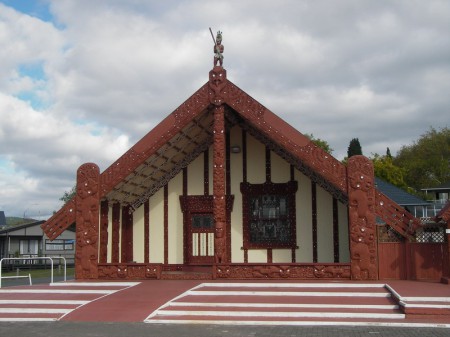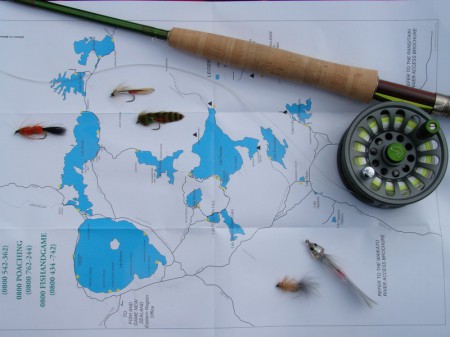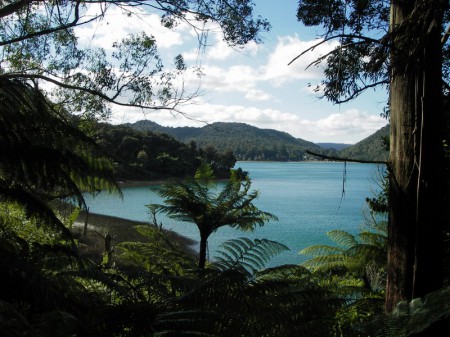The capital
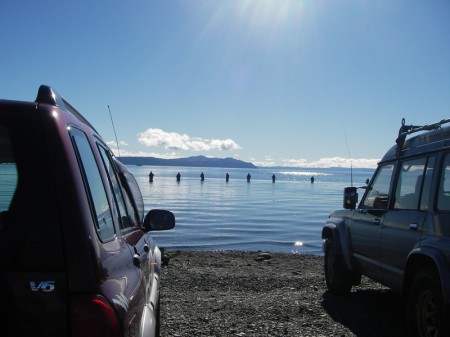 Finally in Turangi, the self proclaimed trout fishing capital of the world! Situated on the banks of the famous Tongariro River at the southern end of Lake Taupo, the fishing opportunities and the quality of the fish this laid back town has to offer are truly something special. Within an hour’s drive are countless rivers and creeks just waiting to be explored. The King country to the west being much underestimated with many great fishing opportunities.
Finally in Turangi, the self proclaimed trout fishing capital of the world! Situated on the banks of the famous Tongariro River at the southern end of Lake Taupo, the fishing opportunities and the quality of the fish this laid back town has to offer are truly something special. Within an hour’s drive are countless rivers and creeks just waiting to be explored. The King country to the west being much underestimated with many great fishing opportunities.
Seeing dear friends after more than 8 years and catching up was wonderful and we already enjoyed many delicious dinners together. The evenings usually go by just too quickly with a yummy meal, interesting discussions and a lot of laughter. With Jock and Harry, the two new dogs our friends got a while ago, always being part of the fun. They are very handsome and love to cuddle up, but despite their very friendly nature both are great, well trained hunting dogs.
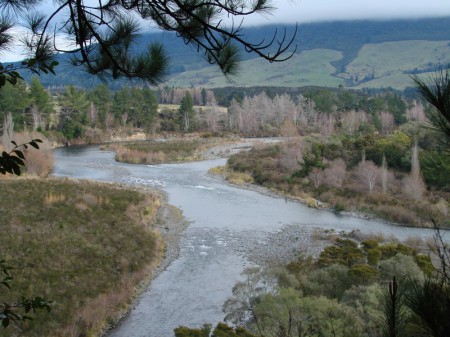 Winter is now in full swing with temperatures at night time down to -6°C and between 5 and 12°C during the day. The weather has been brilliant for the last two weeks – the school holidays – and many families enjoyed a day on the Whakapapa skifield on Mount Ruapehu, New Zealand largest skiing area. Snow is still a bit scarce, but some of the lifts are running.
Winter is now in full swing with temperatures at night time down to -6°C and between 5 and 12°C during the day. The weather has been brilliant for the last two weeks – the school holidays – and many families enjoyed a day on the Whakapapa skifield on Mount Ruapehu, New Zealand largest skiing area. Snow is still a bit scarce, but some of the lifts are running.
Winter and especially school holidays are a busy time also on the rivers; the Tongariro being the most targeted with some of the pools close to town crowded at times. But if one is prepared to walk, there is always a spot to be found where no one is around. Because of the sunny, dry weather, the water flows low and clear everywhere and not a lot of fish are running.
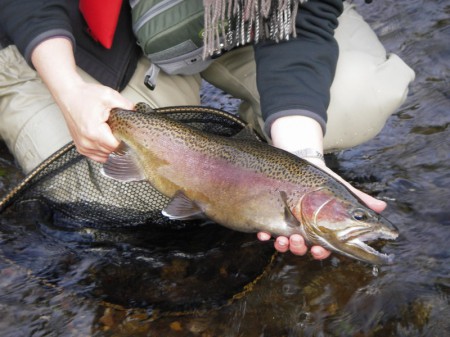 The Tauranga-Taupo River or T-T needs a fresh to bring more fish up the river. The Hinemaiaia, another small river flowing into Lake Taupo, fishes well though. These small rivers are a real trout paradise full of driftwood and other structure. The wood and overgrown banks are hard on our gear and some days the number of lost flies reaches double figures. So Béatrice spends many evenings on the vice tying nymphs that will hopefully deceive the fish of a lifetime. With the water being low and clear and the fish being finicky, a combination of a heavier nymph in size 10 or 12 and a small natural nymph pattern in size 14 or even 16 brings the best results. On the small rivers we use our 5 weight rods, on the Tongariro, which requires even heavier nymphs, we use 7 and 9 weights. We are still practicing casting with our 11’ switch cast rod, which would be perfect for fishing big waters like the Tongariro. We will get there eventually.
The Tauranga-Taupo River or T-T needs a fresh to bring more fish up the river. The Hinemaiaia, another small river flowing into Lake Taupo, fishes well though. These small rivers are a real trout paradise full of driftwood and other structure. The wood and overgrown banks are hard on our gear and some days the number of lost flies reaches double figures. So Béatrice spends many evenings on the vice tying nymphs that will hopefully deceive the fish of a lifetime. With the water being low and clear and the fish being finicky, a combination of a heavier nymph in size 10 or 12 and a small natural nymph pattern in size 14 or even 16 brings the best results. On the small rivers we use our 5 weight rods, on the Tongariro, which requires even heavier nymphs, we use 7 and 9 weights. We are still practicing casting with our 11’ switch cast rod, which would be perfect for fishing big waters like the Tongariro. We will get there eventually.
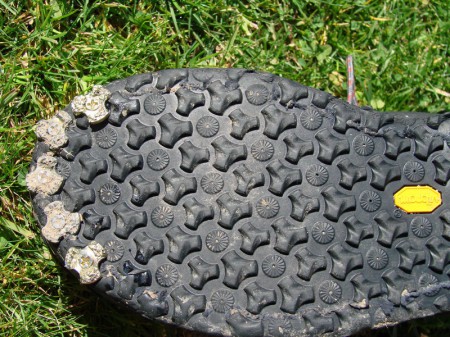 Our wading boots get a hard beating with a lot of walking along the rivers and wading in the riverbeds with very abrasive rocks. No wonder our new sticky-rubber soles looked quite worn after a short period of use, especially in the front parts. A while ago we decided to use Simms star cleats to protect the front of the soles against premature wear. The screwed in cleats – 3 to 5 on each boot – work very well and the soles will hopefully last much longer this way.
Our wading boots get a hard beating with a lot of walking along the rivers and wading in the riverbeds with very abrasive rocks. No wonder our new sticky-rubber soles looked quite worn after a short period of use, especially in the front parts. A while ago we decided to use Simms star cleats to protect the front of the soles against premature wear. The screwed in cleats – 3 to 5 on each boot – work very well and the soles will hopefully last much longer this way.
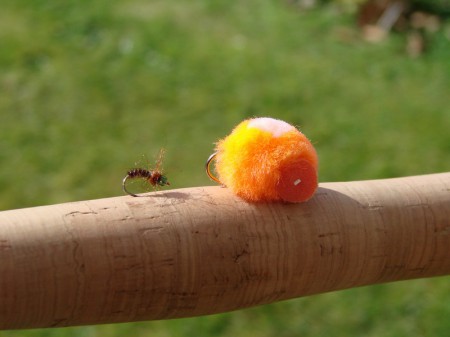 This week a 14 pound brown trout has been taken on the Tongariro and many more fish around the magic 10 pound mark have been caught in the last few weeks. Even if fish numbers are not that high at the moment, there is always the chance of a good catch.
This week a 14 pound brown trout has been taken on the Tongariro and many more fish around the magic 10 pound mark have been caught in the last few weeks. Even if fish numbers are not that high at the moment, there is always the chance of a good catch.
We haven’t done any river mouth fishing yet, but others are fishing the mouths to good avail. It’s always a funny sight to see 8 or 10 fishers standing side by side waist deep out in the lake casting their offerings out in to the depths for hours.
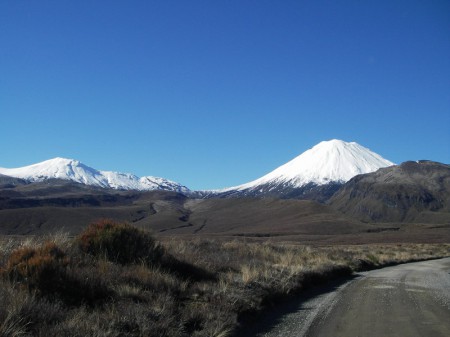 It’s not all about fishing though and again we did some terrific walks in the area. We did not hike the Tongariro Crossing, one of New Zealand’s great walks, this time, but we did many shorter ones up the volcanoes. Three days ago on a clear, sunny day we went up to the south crater from Mangatepopo road end – the first part of the crossing – while the peaks of Mount Tongariro and Ngauruhoe, covered in fresh, gleaming white snow, looked down on us. Out west the distinctive shape of Mount Taranaki could clearly be seen against a cloudless, blue sky. The good conditions attracted many people and some tackled the mountains in shorts and sneakers, not exactly an appropriate outfit for an alpine walk in wintertime. But as a friend uses to say: No brain, no pain.
It’s not all about fishing though and again we did some terrific walks in the area. We did not hike the Tongariro Crossing, one of New Zealand’s great walks, this time, but we did many shorter ones up the volcanoes. Three days ago on a clear, sunny day we went up to the south crater from Mangatepopo road end – the first part of the crossing – while the peaks of Mount Tongariro and Ngauruhoe, covered in fresh, gleaming white snow, looked down on us. Out west the distinctive shape of Mount Taranaki could clearly be seen against a cloudless, blue sky. The good conditions attracted many people and some tackled the mountains in shorts and sneakers, not exactly an appropriate outfit for an alpine walk in wintertime. But as a friend uses to say: No brain, no pain.
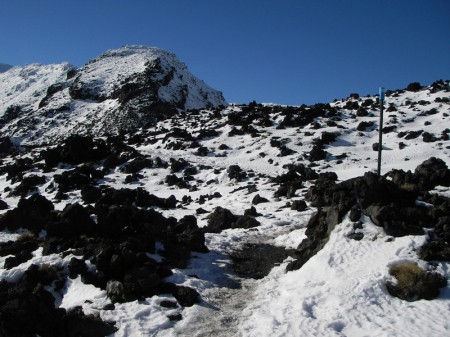 For the first kilometers the track crosses areas with diverse alpine scrub vegetation. The higher up it goes, the younger the underground becomes and after an hour of walking we found ourselves surrounded by sharp, dark lava rocks with only very little signs of plant life. With the previous nights very cold, frost was still present at mid day and every little stream was covered in ice.
For the first kilometers the track crosses areas with diverse alpine scrub vegetation. The higher up it goes, the younger the underground becomes and after an hour of walking we found ourselves surrounded by sharp, dark lava rocks with only very little signs of plant life. With the previous nights very cold, frost was still present at mid day and every little stream was covered in ice.
After a long hike or a day standing in a cold river, we love to soak in the Tokaanu thermal hot pools just a couple of kilometers to the west of Turangi to relax and get warm again.
The nearby Tongariro National Trout Center has seen a lot of exciting changes since our last visit in 2002 with a new aquarium still under construction, scheduled for opening by the end of this year. The visitor center offers interesting insights into the history of trout fishing and the biology of freshwater habitats. On the day of our visit there was a kid’s fish out day going on with girls and boys fishing with a fly in the Centers fish out pond. Great to see all those happy faces!
For the latest local in-depth fishing information go to: www.sportinglife-turangi.co.nz
